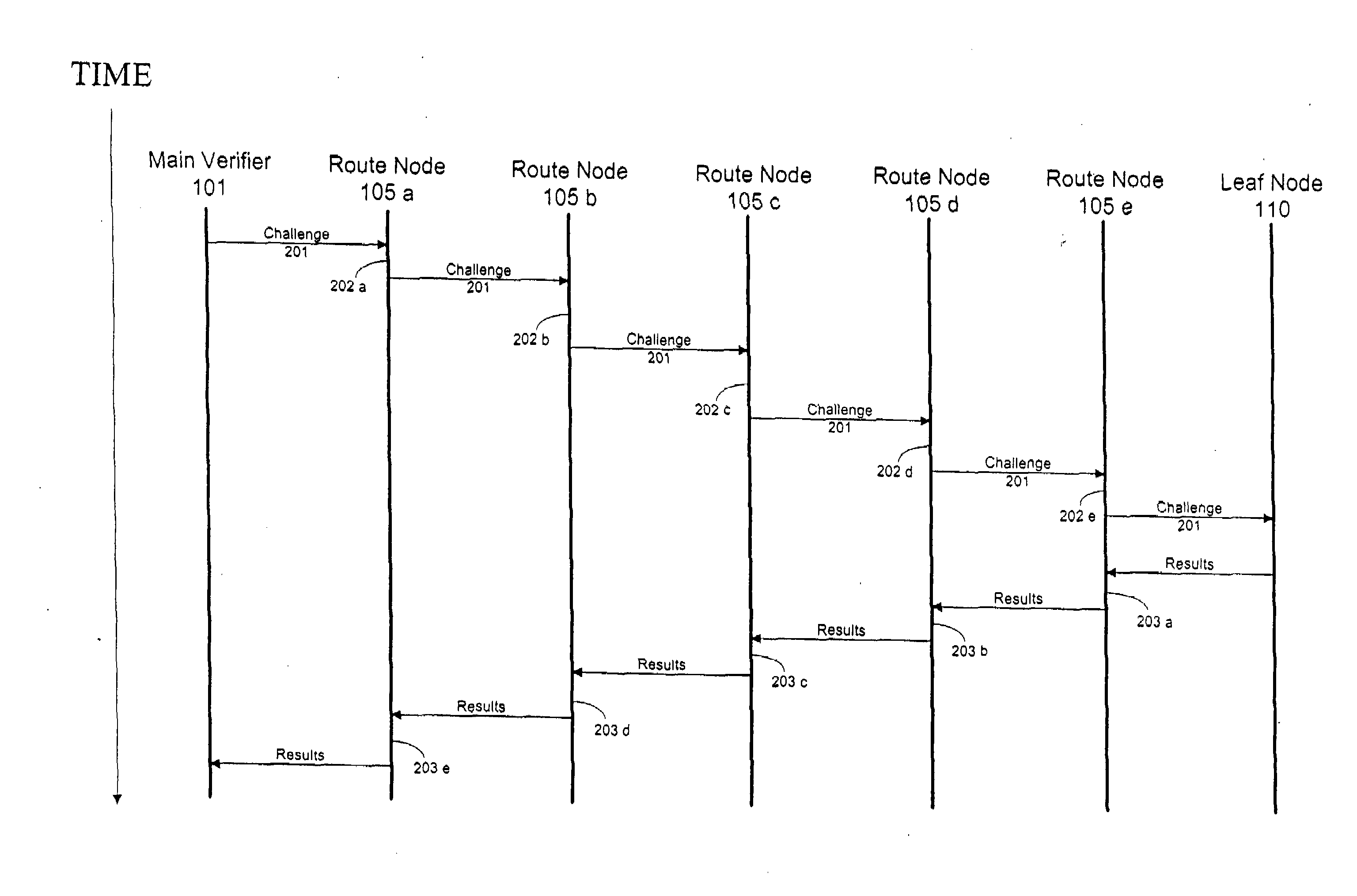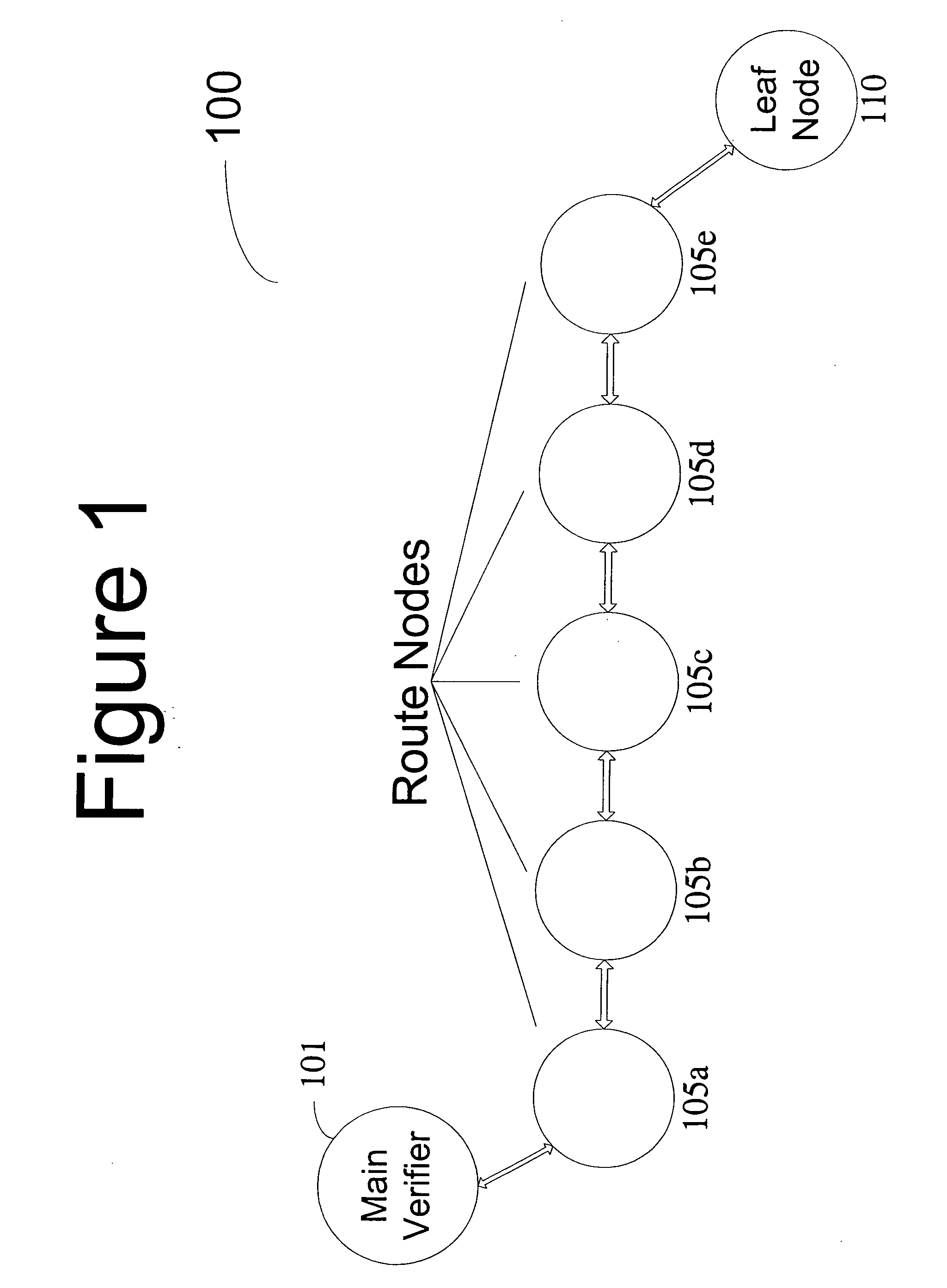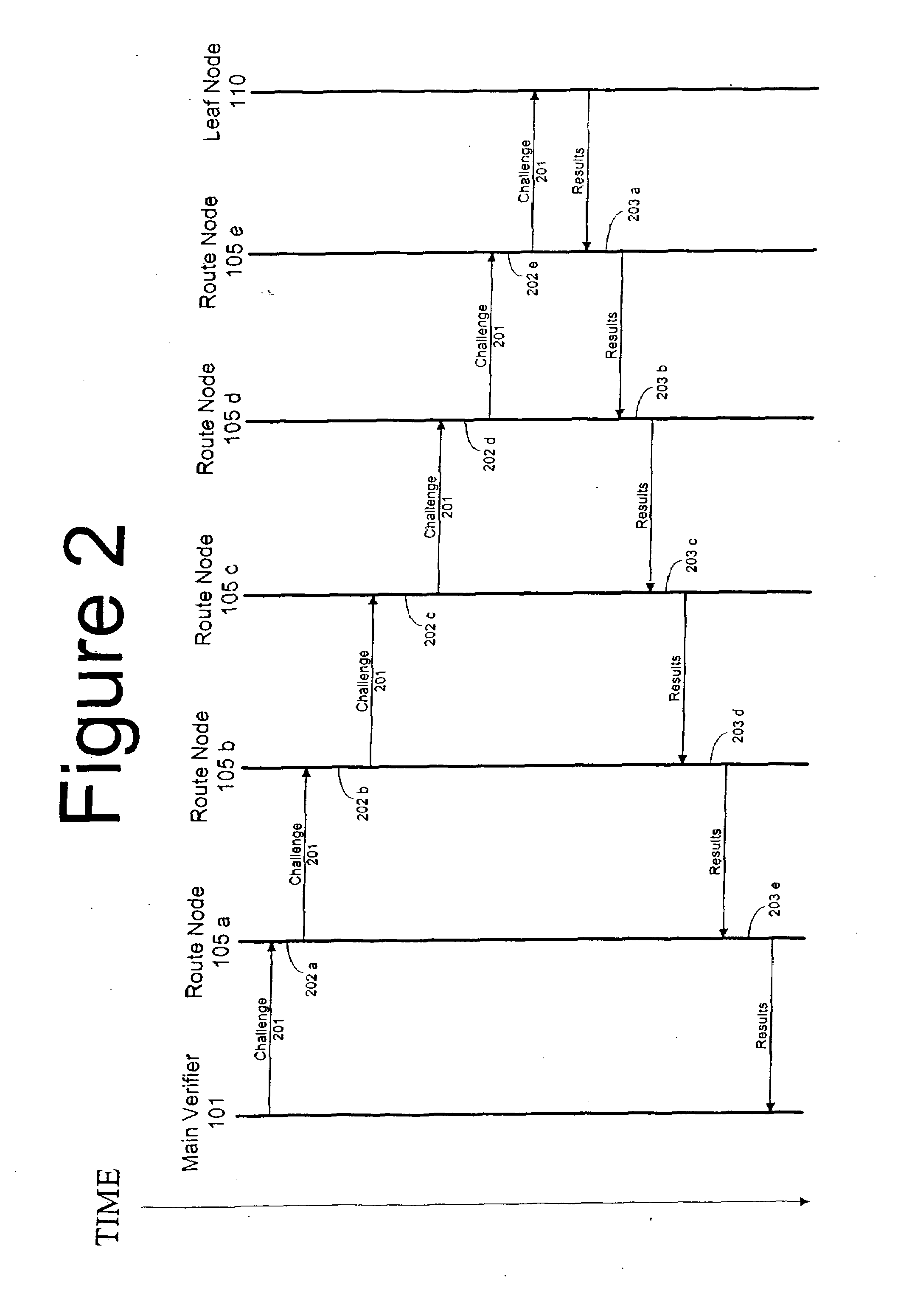Method and computer product to increase accuracy of time-based software verification for sensor networks
a sensor network and software verification technology, applied in the field of authentication software on wireless sensor network nodes, can solve the problems of affecting the accuracy of wireless sensor authentication, so as to reduce the time variance, the effect of accurate verification of software running on the node and reducing the time delay
- Summary
- Abstract
- Description
- Claims
- Application Information
AI Technical Summary
Benefits of technology
Problems solved by technology
Method used
Image
Examples
Embodiment Construction
[0013]FIG. 1 illustrates an existing wireless sensor network 100 utilizing existing time sensitive testing protocols. Main verifier 101 is prepared to challenge leaf node 110 to determine if the software loaded on leaf node 110 is corrupt. Main verifier 101 issues a challenge to leaf node 110, the challenge comprising a cryptographic operation for the leaf node to perform. However, this challenge must be passed through each route node 105a-e. Depending on the current functions of the route nodes, the challenge will experience random time delays before it is ultimately received by the leaf node. Once the leaf node completes the challenge, the results are sent back up the route to the main verifier. Each route node again has to pass the result, and random time delays will again accumulate. Once the main verifier receives the result, it checks the result and the time taken. If the time taken to complete the challenge and respond falls within an accepted window of time, and the results ...
PUM
 Login to View More
Login to View More Abstract
Description
Claims
Application Information
 Login to View More
Login to View More - R&D
- Intellectual Property
- Life Sciences
- Materials
- Tech Scout
- Unparalleled Data Quality
- Higher Quality Content
- 60% Fewer Hallucinations
Browse by: Latest US Patents, China's latest patents, Technical Efficacy Thesaurus, Application Domain, Technology Topic, Popular Technical Reports.
© 2025 PatSnap. All rights reserved.Legal|Privacy policy|Modern Slavery Act Transparency Statement|Sitemap|About US| Contact US: help@patsnap.com



